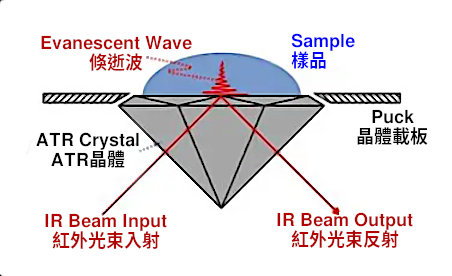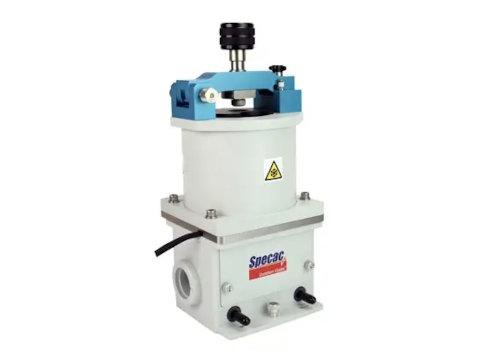How Does ATR Spectroscopy Work?
ATR (Attenuated Total Reflectance) spectroscopy is a powerful analytical technique that sheds light on the molecular makeup of materials. But how exactly does it work its magic? Let's delve into the fascinating world of ATR spectroscopy through the lens of SEO optimization and with some additional details to enhance understanding.
The Core Principle: Internal Reflection and Evanescent Waves
At the heart of ATR lies the concept of internal reflection. An infrared (IR) light beam strikes an ATR crystal (typically made of diamond, zinc selenide, or germanium) at a specific angle, exceeding the critical angle for the crystal material. This critical angle ensures the light reflects internally within the crystal instead of passing through it. Like the below figure:

ATR Optical Mechanism
In order to ensure that the infrared beam will produce total reflection on the surface of the ATR crystal tip instead of transmission, the incident angle of the infrared beam must be greater than the critical angle of the crystal, and the critical angle depends on the refractive index of the crystal material. For example, the British SPECAC's QuestATR optical module is designed with a fixed incident angle of 45°, which is higher than the various ATR crystals that can be installed on this product, including diamond, zinc selenide (ZnSe) and germanium (Ge).
Evanescent Wave Adsorption
During the total reflection process, infrared light will penetrate to the interface between the crystal and the sample, forming an evanescent wave with a very short penetration depth. Due to the interaction between the evanescent wave and the sample, part of the infrared light is absorbed by the sample. The amount of infrared light absorbed is related to the molecular structure and composition of the sample. We can obtain the composition code of the sample molecules by interpreting the absorption values.
Technical Details of ATR Spectroscopy
Angle of Incidence: The angle of incidence must be greater than the critical angle to ensure the light beam reflects from the ATR crystal surface rather than transmitting through it. The critical angle depends on the refractive index of the crystal material.
Evanescent Wave: The Evanescent Wave is a key concept in ATR spectroscopy. It has a very short penetration depth, typically only a few micrometers, which makes it highly sensitive to the sample.
ATR Crystals: The choice of ATR crystal can significantly impact the quality of the spectrum. Common ATR crystal materials include diamond, zinc selenide, and germanium.
Sample Preparation: ATR spectroscopy has minimal sample preparation requirements. Solid samples can usually be placed directly on the ATR crystal. Liquid samples can be spread onto the ATR crystal or placed in an ATR cell.
Specac, the designer and manufacturer of accessories and sample preparation solutions in UK, has brought to you the disposable Arrow Silicon ATR slides, which is a perfect solution to those senstive precious samples. This product can avoid interpollution between samples. It is the best solution for biochemical, pharmaceutical research applications.
Conclusion
ATR spectroscopy is a powerful analytical technique that offers valuable insights into the molecular composition of materials. Its non-destructive nature, high sensitivity, and broad applicability make it an indispensable tool in various scientific fields, including chemistry, material science, pharmaceuticals, environmental analysis, and forensics. As technology continues to advance, ATR spectroscopy is poised to play an even more prominent role in our understanding of the world around us.
We have many other special ATR solutions for your research & experiments, such as very low temperature ATR equipment. You're welcome to contact ACTTR Technology, and we're pleased to serve you.

-150°C Very Low Temperature ATR Equipment


